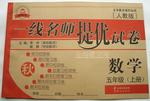题目内容
skiing in the snow-covered areas than sitting on the beach, according to a report by the UK newspaper
The Telegraph.
The researchers at Kanazawa Medical University, Japan and American company Johnson
Johnson conducted the study together. They looked at the effects of light reflection on newly fallen
snow on a ski trail (a rough path) in Ishikawa District, northern Japan. They compared the results with the
levels of UV rays on a sand beach in southern Japan's Okinawa District.
They found that on the beach, eyes are exposed to a daily 260 kilojoules (千焦耳) of UV a square
meter compared to 658 kilojoules in snow-covered areas.
The findings are supported by the Japan Meteorological Agency. According to the agen- cy, the
reflection rate of UV light on beaches is often between 10 and 25 percent, compared to 80 percent in the
new snow areas. The amount of light increased 4 percent with a 300-meter rise in height.
Most of us know that UV rays can harm the skin. That's why we wear sunscreen on our skin before we
get out in the sun. But many of us may not realize that UV rays are also harmful to the eyes.
If your eyes are exposed to large amounts of UV radiation over a short period of time, you may
experience a kind of sunburn of the eye, which is harmful. Your eyes will become red and feel a strange
feeling. They may be sensitive to light. Fortunately, this is usually temporary (暂时的) and seldom causes
permanent damage to the eyes.
Long-term exposure to UV radiation, however, can be more serious. Scientific studies and researches
have shown that exposure to small amounts of UV radiation over a period of many years increases the
chance of eye damage, which could lead to total blindness.
B. a travel journal
C. a medical magazine
D. a physics textbook
B. Short-time exposure of the eyes to UV rays doesn't harm them at all.
C. Most people know that UV rays harm the eyes as well as the skin.
D. The study was conducted by researchers from Japan, the USA and the UK.
B. sunhat
C. suncream
D. sunburn
B. Go to hospital to have your eyes examined.
C. Wearing a hat can provide protection while skiing in new snow areas.
D. Take some measures to protect your eyes while skiing in new snow areas.

 一线名师提优试卷系列答案
一线名师提优试卷系列答案 阳光试卷单元测试卷系列答案
阳光试卷单元测试卷系列答案
| |||||||||||||||||||||||||||||||||||||||||||||||||||||||||||
| |||||||||||||||||||||||||||||||||||||||||||||||||||||||||||
